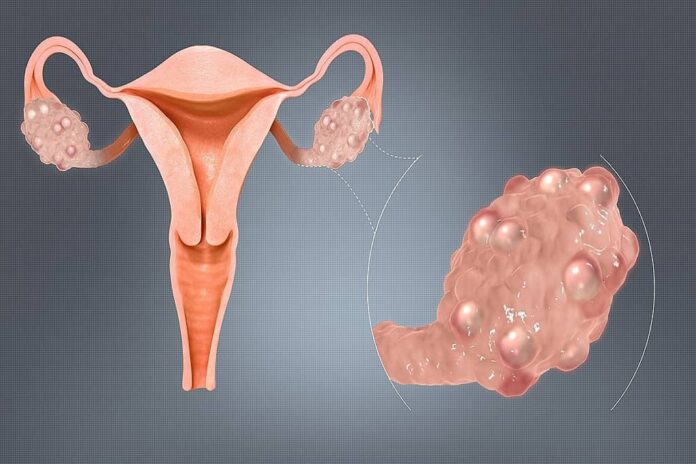Polycystic ovarian syndrome (PCOS) and, the most common endocrine disorder in women of childbearing age, affects 6% to 10% of premenopausal women. The diagnosis of PCOS and PCOD is based on a combination of diagnostic, biochemical, and ultrasound criteria.
The main diagnostic criteria for the difference between POCD and PCOS are polycystic ovarian syndrome, oligo anovulation, and hyperandrogenism. But the diagnosis of PCOS and PCOD subjective because of counting.
The number of ovarian follicles and measuring ovarian volume. Using an ovarian ultrasound is technique-dependent and standardized measurements are difficult to obtain.
Causes of POCD and PCOS
The number of follicles and the size of the PCOD ovary after ovarian ultrasound may overlap in women with and without PCOS and PCOD cases in women without PCOS.
In addition, there is currently no consensus on the most appropriate androgens for the diagnosis of PCOS, and various threshold values for androgens have been suggested for the diagnosis.
Ayurvedic treatment hyperandrogenism and PCOS as a direct immunoassay for the diagnosis of PCOS. Assay of testosterone. The methods can be very imprecise. Its level is at the lower end of the female beach.
Anti-Müllerian hormone (AMH) is secreted by granulosa cells and small antral and pre-central follicles. Serum AMH levels were markedly increased in women with PCOS and positively correlated with a small number of antral follicles].
Treatment of PCOS
AMH levels have reported being independently related to HA and PCOD. the strongly associated with key phenotypic features of PCOS, including ovulatory dysfunction.
The increases in serum AMH have been suggested as an objective surrogate marker for the diagnosis of PCOS. its shown to correlate with traditional diagnostic criteria.
It is difficult to determine the optimal AMH cutoff value for the diagnosis of regular PCOS Exercise because the concentration of AMH reflects the age-related decrease in the number of ear follicles.
A variety of AMH cleavage values for predicting PCOS have been proposed in previous studies. For example, in the same age group, serum AMH levels were higher in women with PCOS than those without PCOS and suggested age-specific AMH threshold values for Chinese women with or without PCOS.
In addition, an AMH score, the level of AMH relative to expected means, and the standard deviation for a given age have been proposed to compensate for the decline in anti-follicle age-related numbers.
AMH levels and PCOS phenotypes and determine the optimal threshold value of AMH for diagnosing PCOS in young women.
POCD and PCOS
Between POCD and PCOS, we conducted a survey on the menstrual health of young women under 40 living in Seoul, Korea. Participants were recruited through newspaper and online advertisements.
We recruited 207 women with PCOS and 220 normal cycle women with normal androgenemia. As proposed in the European Society of Human Reproduction and Embryology body. PCOS was diagnosed with two or more of the following three criteria: oligo- or anovulation, HA, and polycystic Ovary.
Oligomenorrhea (OM) has been defined as less than eight menstrual cycles per year. Biochemical hyperandrogenemia total testosterone level greater than 95th percentile (testosterone level 67 ng/dl or free testosterone 84 0.84 ng/dl) or free testosterone for testosterone levels in healthy women the regular menstrual cycle.
- 3 Ways to Improve Your Health
- How To Improve Child’s Health?
- How Cardarine for Sale Can Be the Better Solution Over SARMs
For More Latest Health NEWS and The Difference Between POCD and PCOS, Visit Ehealth Spider and Follow Us on Facebook.











